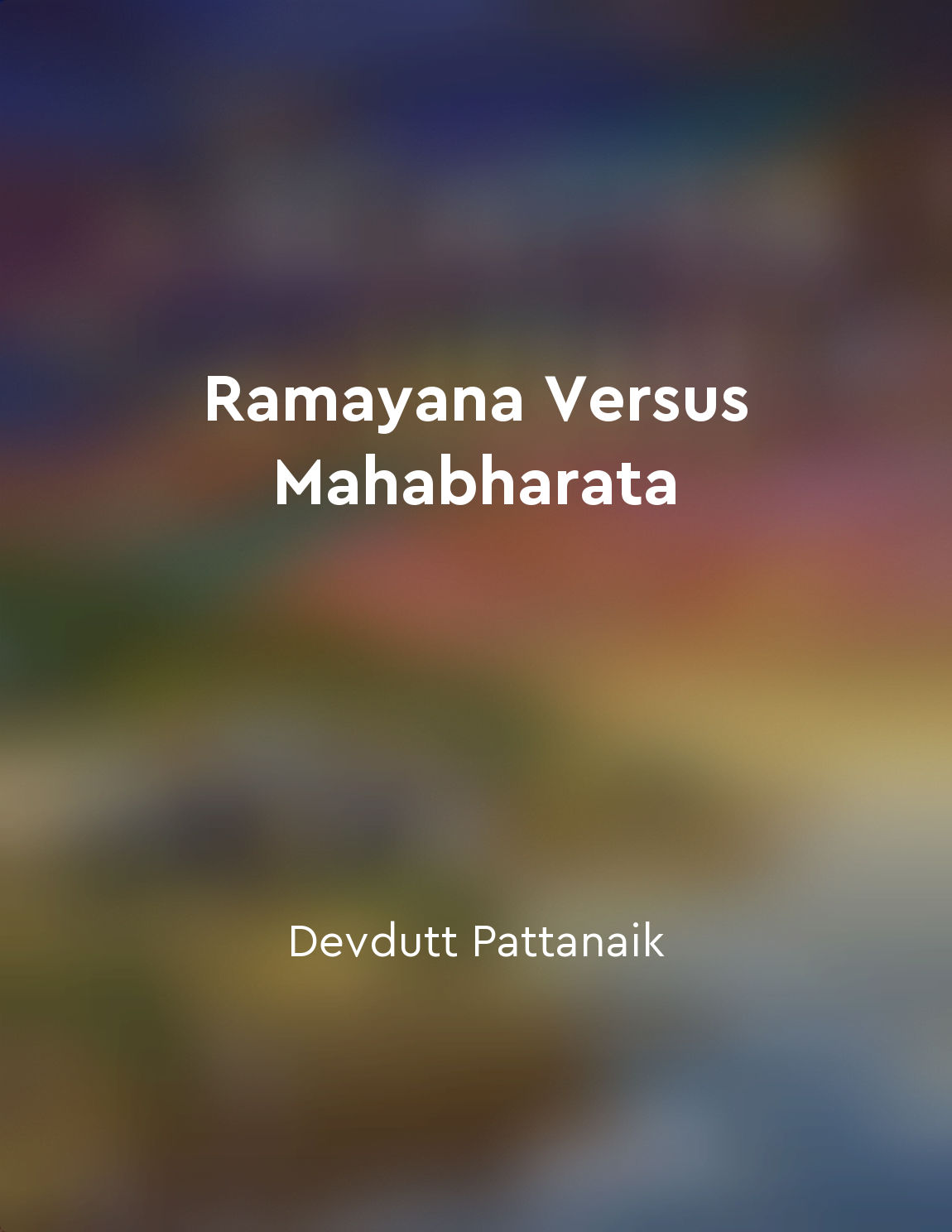Epics Ramayana and Mahabharata talk about duty, love, war, betrayal from "summary" of Ramayana Versus Mahabharata by Devdutt Pattanaik
The Ramayana and the Mahabharata are two ancient Indian epics that delve into the complexities of human existence. They are not just stories about heroes and villains, but about the eternal struggle between duty and desire, love and loyalty, war and peace, betrayal and redemption. These epics are a reflection of the human experience, exploring the various facets of life through the lives of their characters.
In the Ramayana, duty is paramount. The protagonist, Rama, is the epitome of righteousness and honor, always putting his duty towards his kingdom and family above his personal desires. His unwavering commitment to his duty is tested when he is banished to the forest, but he accepts his fate without question, demonstrating the importance of obedience and sacrifice.
On the other hand, the Mahabharata is a saga of love, war, and betrayal. The characters in this epic are more complex and flawed, grappling with their inner demons and conflicting emotions. The love between the Pandavas and Draupadi is overshadowed by jealousy and rivalry, leading to a cataclysmic war that tears apart families and kingdoms. Betrayal is a recurring theme in the Mahabharata, with characters like Karna and Duryodhana betraying their own kin for personal gain.
Both epics highlight the consequences of human actions and the importance of moral values. While the Ramayana emphasizes the virtues of duty, honor, and righteousness, the Mahabharata delves into the darker aspects of human nature, such as jealousy, greed, and deceit. Through the trials and tribulations of their characters, these epics provide valuable insights into the complexities of life and the eternal struggle between good and evil.The Ramayana and the Mahabharata are timeless classics that continue to resonate with readers across the world. They offer profound lessons about morality, ethics, and the human experience, making them not just epic tales, but invaluable sources of wisdom and knowledge.

Open in app
The road to your goals is in your pocket! Download the Oter App to continue reading your Microbooks from anywhere, anytime.


